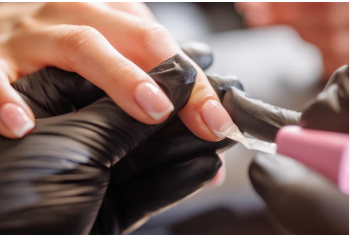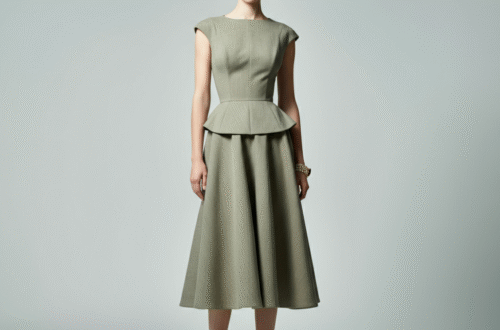Pink is more than just a color; it’s an emotion, a statement, and a powerful tool in the world of art and design. When we talk about artistic pink, we are exploring a spectrum of shades that have inspired creators for centuries. From soft pastels that whisper of romance to bold magentas that shout with energy, this versatile color holds a unique place in our cultural and creative consciousness. This article will journey through the meaning, history, and application of artistic pink, showing you how to harness its power in your own creative projects. We will explore how different shades can evoke specific feelings and how artists have used them to make a lasting impact.
Key Takeaways
- Artistic Pink is Versatile: It ranges from soft, calming tones to vibrant, energetic hues, making it suitable for a wide array of artistic applications.
- Deep Symbolic Meaning: The color carries significant cultural and emotional weight, representing everything from love and innocence to rebellion and power.
- Historical Significance: Pink has evolved from a symbol of masculinity and luxury to one of femininity and, more recently, a color that defies gender norms.
- Psychological Impact: Different shades of pink can influence mood and perception, with lighter tones having a calming effect and brighter tones stimulating energy.
- Practical Application: Understanding color theory and a few simple tips can help you effectively incorporate artistic pink into your creative work, whether in fashion, home decor, or digital art.
The Deep Meaning Behind Artistic Pink
Colors speak a language all their own, and artistic pink is a particularly fluent speaker. Its meaning is not singular but multifaceted, shifting with shade, context, and cultural interpretation. Traditionally in Western cultures, pink has been associated with femininity, gentleness, and romance. Think of Valentine’s Day cards, ballet slippers, and cherry blossoms. This connection gives the color a soft, approachable quality that can evoke feelings of comfort and affection. It’s a color often used to represent innocence and youthful charm, making it a popular choice for themes related to childhood and sweetness.
However, the meaning of artistic pink extends far beyond these traditional interpretations. In contemporary art and design, bold, vibrant pinks like magenta and fuchsia are used to convey confidence, rebellion, and empowerment. These electrifying shades challenge outdated notions and demand attention. They are often used in movements advocating for social change and gender equality, transforming pink into a symbol of strength and protest. The duality of artistic pink—its ability to be both soft and strong, gentle and defiant—is what makes it such a compelling and dynamic tool for any creator.
Soft Pinks: Whispers of Calm and Serenity
The softer end of the artistic pink spectrum includes shades like blush, rose quartz, and baby pink. These hues are renowned for their calming and soothing properties. In color psychology, light pink is often linked to tranquility and stress relief. It creates a sense of peace and optimism, making it a favorite for spaces designed for relaxation, like bedrooms and nurseries. Artists use these gentle tones to create a delicate, ethereal mood in their work. A painting dominated by soft pinks might evoke a feeling of nostalgia or a tender moment, inviting the viewer into a world of quiet contemplation.
In the realm of design, these shades communicate elegance and sophistication. A brand using a pale pink logo might be aiming to appear approachable, gentle, and caring. In fashion, blush tones are timeless, often used for classic pieces that convey a subtle and understated grace. The power of soft artistic pink lies in its ability to create a positive, nurturing atmosphere without overwhelming the senses.
Bold Pinks: A Statement of Power and Energy
On the opposite side of the spectrum are the bold and saturated shades of artistic pink. Think hot pink, magenta, and neon pink. These colors are anything but quiet; they are energetic, exciting, and impossible to ignore. They stimulate the senses and can create a feeling of exhilaration and confidence. Artists and designers use these vibrant hues to make a strong statement and grab an audience’s attention. A splash of hot pink in a composition immediately becomes the focal point, drawing the eye and injecting a dose of playful energy.
Historically, bold pinks have been associated with nonconformity and punk rock culture, used to defy social norms and express individuality. This rebellious spirit continues today, with these shades often appearing in modern art and fashion to communicate a message of empowerment and boldness. Using a vibrant artistic pink in your work is a declaration. It says you are not afraid to stand out, to be different, and to express yourself with passion and conviction. It’s the color of confidence.
A Brief History of Pink in Art and Fashion
The journey of artistic pink through history is fascinating and full of surprises. For centuries, pink wasn’t even considered a distinct color but rather a lighter shade of red. In the 18th century, it gained popularity among European aristocrats of both genders. Madame de Pompadour, the chief mistress of King Louis XV of France, was so fond of the color that a specific shade of it was named after her: Rose Pompadour. During this period, pink was a symbol of luxury, elegance, and high social status. Men often wore pink silk suits, as it was seen as a diminutive of the masculine color red.
The color’s association with femininity is a relatively recent development, largely a product of 20th-century marketing. After World War II, retailers began to market “pink for girls, blue for boys,” cementing a gender stereotype that has only recently begun to be challenged. In the latter half of the century, artists and subcultures started reclaiming artistic pink. The punk movement used shocking pink to express rebellion, while later artists and activists adopted it as a symbol of feminist strength and LGBTQ+ pride, proving its ability to evolve and take on new, powerful meanings. For more on color trends in style, you can explore insights on the truefashionstory.com Blog.
Understanding the Psychology of Artistic Pink
Why does artistic pink have such a profound effect on us? The answer lies in color psychology. Our brains are wired to react to colors on an emotional level, and pink is no exception. As mentioned, softer pinks tend to have a calming effect. Some studies have even shown that a specific shade called Baker-Miller pink can temporarily reduce aggressive behavior. This is why it has been used in some prison holding cells. This calming influence is attributed to its association with softness, sweetness, and nurturing care.
Conversely, bright and hot pinks have a stimulating effect. These high-energy shades can increase heart rate and create feelings of excitement and fun. They are attention-grabbing and often perceived as playful, vibrant, and modern. Understanding this psychological duality is key for any creator. By choosing the right shade of artistic pink, you can intentionally influence the mood of your audience. Whether you want to create a serene sanctuary or an electrifying experience, there is a shade of pink that can help you achieve your vision.
Pink’s Role in Branding and Marketing
In branding, color is everything. The choice of an artistic pink can define a brand’s personality and how it connects with its target audience. Soft pinks are often used by brands in the beauty, wellness, and baby product industries to convey a sense of care, gentleness, and trust. Think of cosmetics brands that use blush tones to suggest a natural, healthy glow. These colors create an emotional connection based on comfort and empathy.
Meanwhile, brands that want to project a bold, youthful, and modern image often turn to vibrant pinks. Tech companies, fashion-forward brands, and entertainment services might use hot pink or magenta to stand out in a crowded market. This choice communicates that the brand is confident, innovative, and not afraid to break the rules. The right shade of artistic pink can make a brand memorable and help it speak directly to the values and aspirations of its desired customers.
How to Incorporate Artistic Pink into Your Creative Work
Now that you understand the power of artistic pink, how can you use it effectively? The key is to be intentional with your choices. First, consider the emotion or message you want to convey. Are you aiming for calm and elegance, or energy and excitement? Your answer will guide you to the right shade. Don’t be afraid to experiment with different tones to see how they interact with other colors in your palette.
A common technique is to use pink as an accent color. A small touch of a vibrant artistic pink in a neutral composition can create a stunning focal point without overwhelming the entire piece. For a more immersive experience, you can use various shades of pink together to create a monochromatic scheme. This approach can be incredibly sophisticated and impactful. The most important rule is to have fun and let the color inspire you.
Tips for Using Pink in Digital Art
In digital art, the possibilities for using artistic pink are endless. Here are a few tips:
- Gradients: Create beautiful, soft transitions by blending different shades of pink with colors like orange, purple, or blue. Pink-hued sky gradients are particularly effective for creating dreamy, atmospheric scenes.
- Lighting and Glow Effects: Use a bright, saturated pink to create a neon glow effect. This is perfect for cyberpunk or futuristic themes and can add a dynamic energy to your illustration.
- Texture Overlays: Apply a textured brush with a soft pink color over parts of your image to add depth and a tactile quality. This can soften digital work and give it a more traditional, handmade feel.
Tips for Using Pink in Home Decor
Bringing artistic pink into your home can transform the atmosphere of a room.
- Accent Wall: For a bold statement, paint one wall in a rich shade of pink, like dusty rose or even magenta. This can add personality and warmth to a living room or bedroom.
- Soft Furnishings: If you’re hesitant to commit to paint, introduce pink through pillows, throws, rugs, or curtains. This is an easy way to add a pop of color that can be changed with the seasons.
- Art and Accessories: A large piece of abstract art featuring artistic pink can become the centerpiece of a room. Small accessories like vases, lamps, or decorative objects in various pink tones can also tie a space together.
Pink in Combination with Other Colors
The true magic of artistic pink often reveals itself when paired with other colors. Its versatility allows it to harmonize with a wide range of palettes. Pairing soft pink with cool grays and crisp whites creates a modern, sophisticated look that feels both clean and warm. For a more natural and earthy feel, combine dusty rose with olive green, mustard yellow, and natural wood tones.
For a bold, high-contrast palette, try pairing hot pink with deep navy blue, emerald green, or even black. This creates a dramatic and energetic combination that is perfect for making a statement. A classic and romantic pairing is pink and gold, which exudes luxury and elegance. Experimenting with different color combinations will unlock the full potential of artistic pink and help you create unique and memorable designs.
Color Combination Comparison Table
|
Color Combination |
Mood & Feeling |
Best For |
|---|---|---|
|
Pink & Gray |
Modern, Sophisticated, Calm |
Home decor, branding, web design |
|
Pink & Green |
Natural, Vibrant, Fresh |
Fashion, floral arrangements, illustration |
|
Pink & Navy Blue |
Bold, Dramatic, Confident |
Graphic design, formal wear, statement rooms |
|
Pink & Gold |
Luxurious, Elegant, Romantic |
Wedding themes, high-end branding, jewelry |
|
Pink & Orange |
Energetic, Playful, Warm |
Summer themes, art, children’s products |
Conclusion
From the delicate blush of a rose to the electrifying glow of a neon sign, artistic pink is a color of incredible range and depth. It is a shade that has been defined and redefined throughout history, carrying with it meanings of love, rebellion, serenity, and power. As a creator, understanding the psychology and versatility of pink allows you to wield it as a powerful tool to evoke emotion, tell a story, and capture attention. Whether you are designing a brand identity, decorating a room, or painting a masterpiece, don’t underestimate the impact of this remarkable color. Embrace the many faces of artistic pink and let it bring your creative vision to life.
Frequently Asked Questions (FAQ)
1. Is pink considered a masculine or feminine color in art?
Historically, pink was considered a masculine color, as it was a lighter version of the powerful color red. However, in the 20th century, it became strongly associated with femininity through marketing. Today, contemporary artists and designers are challenging these gender norms, using artistic pink as a universal color that can be embraced by anyone.
2. What colors go well with artistic pink?
Artistic pink is very versatile. It pairs beautifully with neutrals like gray, white, and beige for a sophisticated look. For a more vibrant palette, it works well with green, navy blue, and orange. Metallic colors like gold and silver also complement pink, adding a touch of luxury.
3. How can I use a bold pink without it being overwhelming?
The key to using a bold artistic pink is to use it as an accent. A small pop of hot pink in a design or room—such as a single pillow, a piece of art, or a button on a website—can create a dynamic focal point without dominating the entire space.
4. What emotions does the color pink typically evoke?
Lighter shades of pink typically evoke feelings of calm, love, romance, and gentleness. Brighter, more saturated pinks tend to evoke emotions of energy, excitement, fun, and confidence. The specific shade and context heavily influence its emotional impact.





